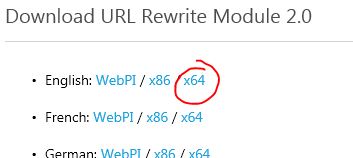 A few years ago I showed how to use Microsoft’s Log Parser tool to take IIS log files and import into a SQL database.
A few years ago I showed how to use Microsoft’s Log Parser tool to take IIS log files and import into a SQL database.
From Microsoft: Log parser is a powerful, versatile tool that provides universal query access to text-based data such as log files, XML files and CSV files, as well as key data sources on the Windows® operating system such as the Event Log, the Registry, the file system, and Active Directory®. You tell Log Parser what information you need and how you want it processed. The results of your query can be custom-formatted in text based output, or they can be persisted to more specialty targets like SQL, SYSLOG, or a chart.
In short, using something like this to take IIS logs and dump into a new SQL table:
C:\Program Files (x86)\Log Parser 2.2>logparser “SELECT * INTO iisLogs FROM c:\temp\logs\*.log ” -i:iisw3c -o:SQL -server:localhost -database:webLogs -username:sa -password:yourpass -createTable: ON
But, if you’re importing tons of records, it might seem to take a while. BUT: you can use the option “transactionRowCount” to gain some performance. The transactionRowCount option determines how many rows are included in each transaction. By default, transactionRowCount is 1, so after every row, the transaction is committed. If you set it to “-1” it will include everything in 1 large transaction.
Test Results
Below a did a few tests. My test included 36,000,000 rows. Continue reading “Increase IIS Logs to SQL Log Parser Import Performance w/ transactionRowCount”
 If you’ve added a rewrite to you web.config but are now receiving a HTTP Error 500.19 Internal Server Error, chances are you need to install the URL Rewrite Module. You might have assumed this is part of your install but it might be missing.
If you’ve added a rewrite to you web.config but are now receiving a HTTP Error 500.19 Internal Server Error, chances are you need to install the URL Rewrite Module. You might have assumed this is part of your install but it might be missing.
 When working with IIS 8 (or even 7 or 7.5), you may have run across this little gem / error: “This configuration section cannot be used at this path”
When working with IIS 8 (or even 7 or 7.5), you may have run across this little gem / error: “This configuration section cannot be used at this path”

